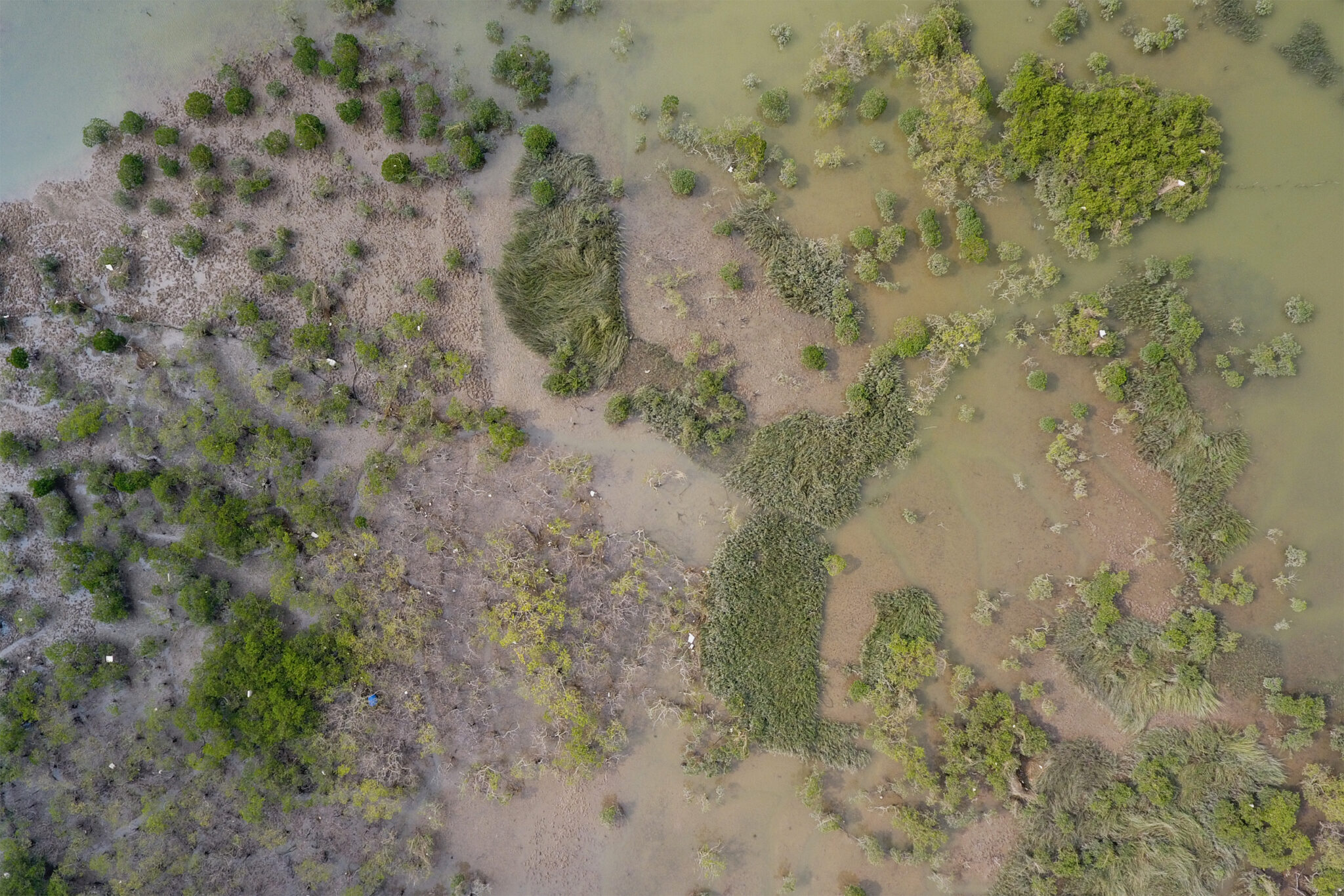BLUE CARBON
The Blue Carbon Initiative, Managing Climate Change Through Coastal Ecosystem Management ⁹
Where does carbon circulate?
GLOBAL CARBON
83% of the global carbon cycle is circulated through the ocean.
83%
50%
COASTAL HABITAT COVERAGE
Coastal habitats cover less than 2% of the total ocean area.
SEDIMENT CARBON
Approximately half of the carbon sequestered in ocean sediments comes from coastal habitats.
2%
What is Blue Carbon?
Blue Carbon is carbon sequestered in coastal ecosystems mainly from¹³:
Mangroves,
Tidal marshes and,
Seagrasses.
These ecosystems sequester and store large quantities of blue carbon in both the plants and the sediments below.
Tidal marshes and soil accumulate organic carbon 55 times faster than tropical rainforests and store it for millennia. ¹⁰
A mangrove forest can store 3 - 5 times more carbon per acre than other tropical rainforest. ¹¹
Seagrass meadows are capable of storing carbon up to 35 times faster than tropical rainforests.¹²
Though coastal ecosystems are small in comparison to other ecosystems, they store a large amount of carbon in their soil.
They need to be conserved and restored as global carbon sinks.
The ongoing destruction and loss of these systems contributes to additional human-induced greenhouse gases.
Aside from providing coastal protection and food security for many communities globally, these coastal ecosystems contribute to climate change adaptation.
Why is it important? ¹⁴
Coastal ecosystems destroyed. ¹⁵
Coastal Ecosystems vs Terrestrial Forests ¹⁶
Carbon sequestration by coastal ecosystems is 50 times greater than that of terrestrial forests.
In coastal marine systems, deep complex root systems play an important role in sequestering carbon. This mechanism provides efficient burying of carbon.
Changes in coastal marine systems can last for centuries, whereas most forest systems plateau after a few decades.
Despite their relatively small size, coastal marine ecosystems sequester carbon just as effectively as terrestrial ecosystems.
Global averages for carbon pools (soil organic carbon and living biomass) of focal coastal habitats. ¹⁷
HUMAN IMPACTS ON COASTAL BLUE CARBON ECOSYSTEMS¹⁸
Common drivers of degradation:
aquaculture
agriculture
mangrove forest exploitation
terrestrial and marine sources of pollution and industrial and
urban coastal development.
Hence, the main driver of degradation is human activities.
IMPACTS ON COASTAL BLUE CARBON ECOSYSTEMS
Scientists hypothesize that healthy coastal ecosystems with a high biodiversity work as effective carbon sinks. Degraded coastal ecosystems with lower biodiversity have limited carbon sink capacities and can be net sources of the climate-relevant greenhouse gases carbon dioxide (CO2) and methane (CH4).²⁰
When coastal ecosystems degrade¹⁹:
They lose their natural ability to sequester CO2
Releases the large carbon stores that have built up under these ecosystems over time.
Releases greenhouse gases in the form of carbon dioxide and methane – the latter is a potent greenhouse gas with a sustained flux global warming potential 45 times that of carbon dioxide.²⁰
COASTAL ECOSYSTEM DEGRADATION ²¹
To encourage climate change mitigation through conservation and restoration of natural systems²² through
education
conservation
government policies
WHAT CAN BE DONE?
CONSERVATION EFFORTS ²⁴
Legislation on state and local levels can be enacted to protect mangroves from direct human damage.
RESTRICTION ZONES ²⁵
Human activity is limited in sections of the ocean to protect coastal ecosystems against facing greater endangerment.
Effective management and conservation of coastal ecosystems can help reverse this loss and degradation of coastal ecosystems by:
Preventing the release of dense carbon stores
Maintaining high sequestration capacity
Ensuring that coastal ecosystem services are essential for adaptation (fisheries, coastal protection, etc.)
Goal: Provide real mechanisms for mitigating climate change by conservation and restoration of coastal marine ecosystems. ²³
The immediate objectives of the initiative are to:
Develop coastal marine conservation and management that maximizes sequestration of carbon.
Develop roadmap for implementing economic incentives, policies or other payment mechanisms for coastal carbon.
Establish a network of demonstration projects.
Develop communication and capacity-building tools.
⁹






